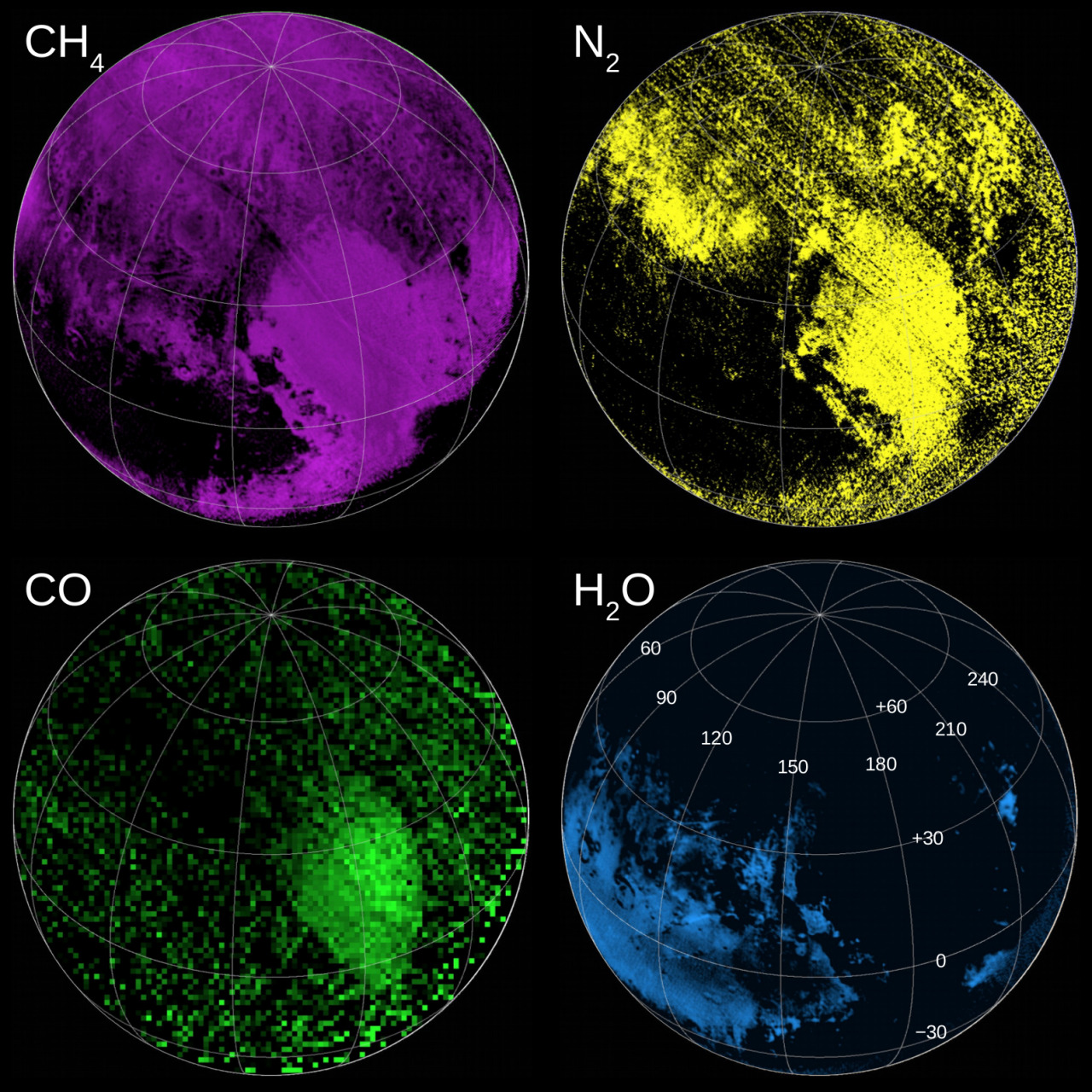Dwarf planet Pluto – a gigantic comet?
Researchers from the Southwest Research Institute in the USA have put forward an exciting theory in the journal Icarus. The scientists have tried to assemble a model for the formation of the dwarf planet Pluto. Here they have looked in particular at the nitrogen-rich Sputnik Planitia basin that is covered by a gigantic glacier made from frozen nitrogen. They combined this data with results from the Rosetta probe that studied the comet 67P.
Their findings: the nitrogen content fits well with the theory that Pluto is a conglomeration of approximately one billion (!) comets or other similar Kuiper Belt objects (KBOs). The initial amount of volatile substances must have then later been changed by the presence of water, the researchers believe – possibly even in the form of an ocean under the crust, like the moons Enceladus or Europa still have today.
An alternative model, however, has not yet been completely ruled out. In this model, Pluto was formed from very cold, frozen gases with a composition similar to that of the Sun’s. In addition, both models are missing a larger quantity of carbon monoxide, which also must have been produced, but was not found by the New Horizons probe during its visit to Pluto.

